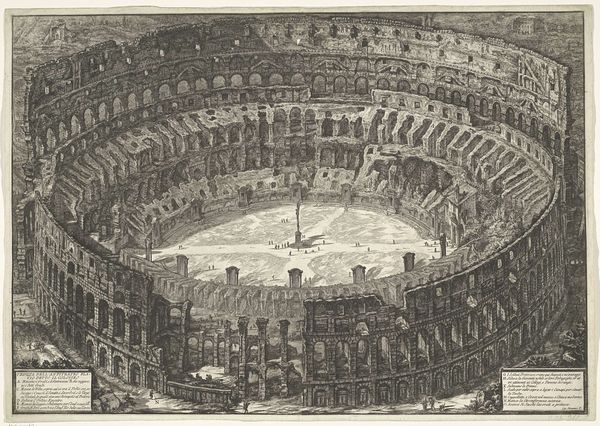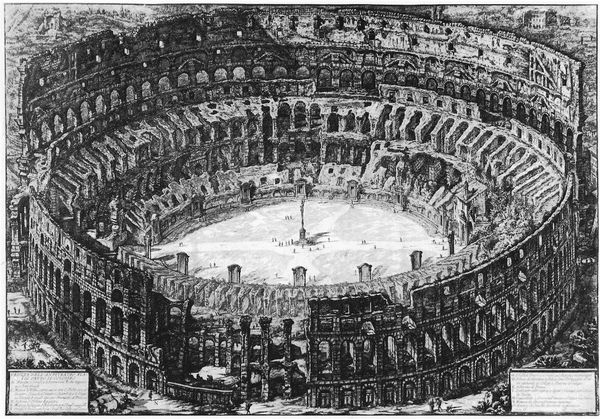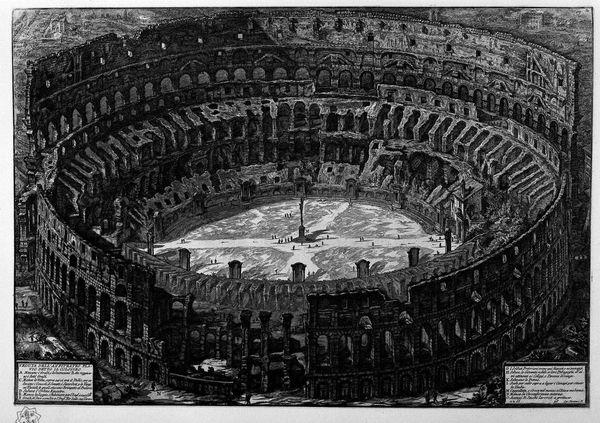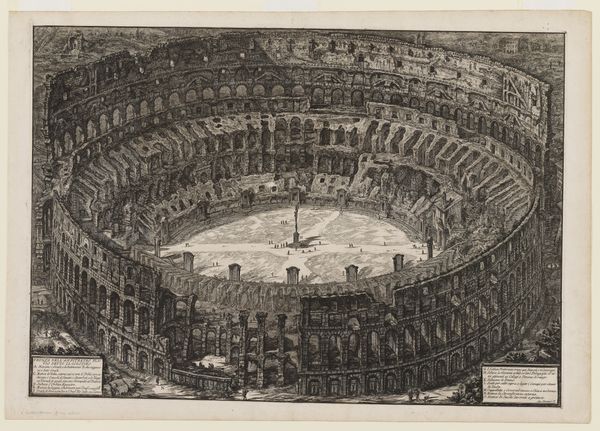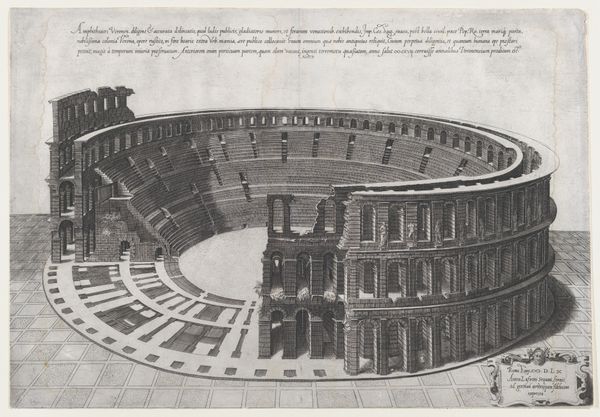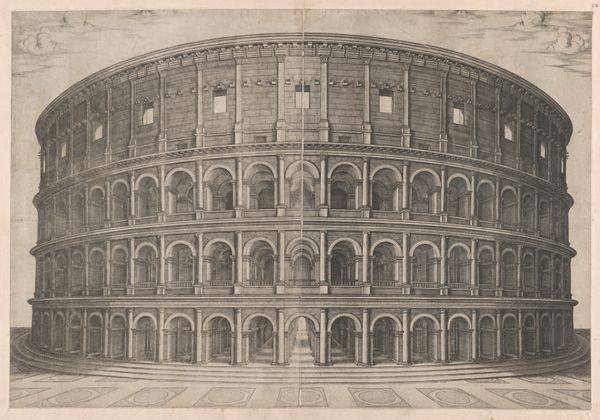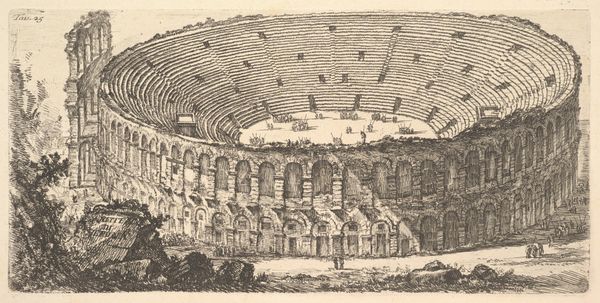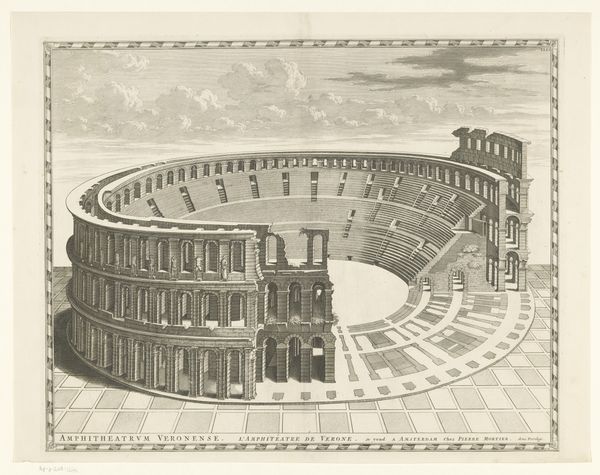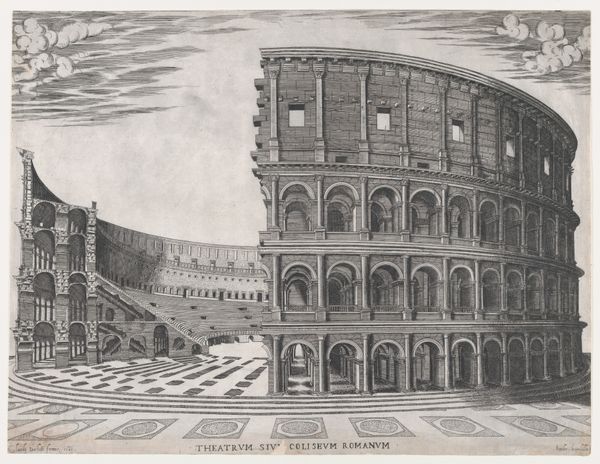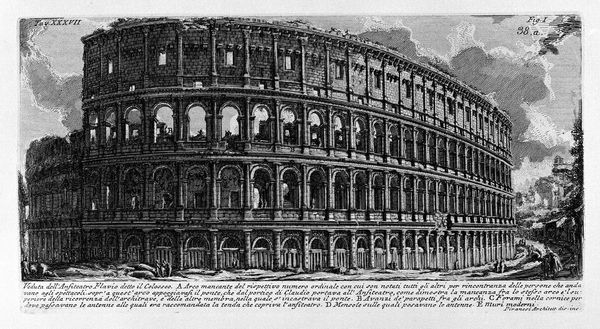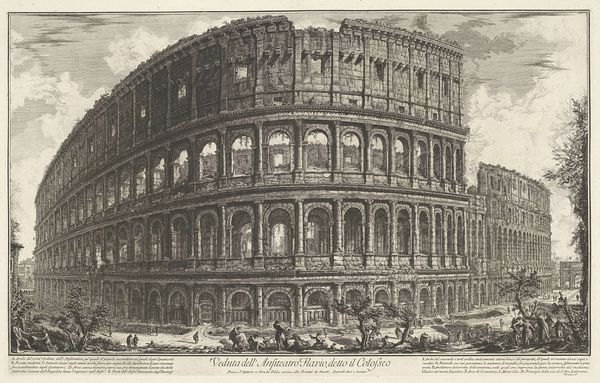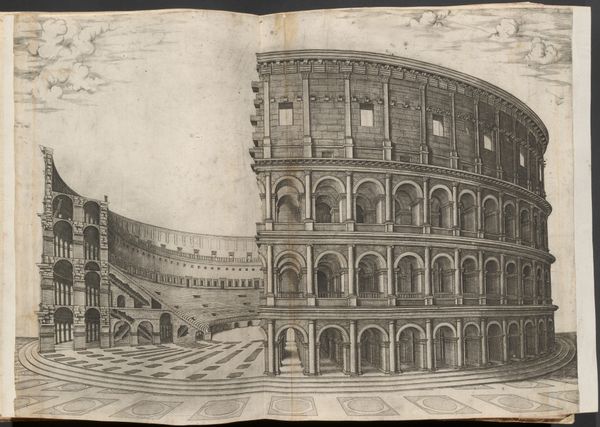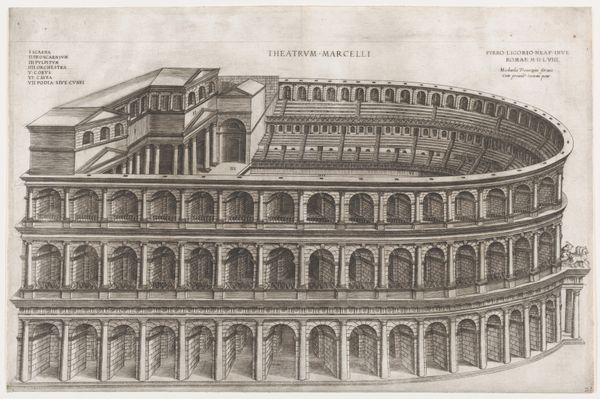
Veduta dell'Anfiteatro Flavio detto il Colosseo, from: 'Vedute di Roma' (Views of Rome) 1776
0:00
0:00
drawing, print, etching
#
drawing
# print
#
etching
#
landscape
#
classical-realism
#
perspective
#
romanesque
#
cityscape
#
history-painting
#
academic-art
Dimensions: Sheet: 30 x 40 in. (76.2 x 101.6 cm)
Copyright: Public Domain
Curator: What strikes me immediately is the sheer magnitude. You feel dwarfed by this incredible architectural ruin, yet there's a strange serenity. Editor: It's certainly arresting. We're looking at Giovanni Battista Piranesi's "Veduta dell'Anfiteatro Flavio detto il Colosseo, from: 'Vedute di Roma' (Views of Rome)," dating to 1776. It’s an etching, a print. Piranesi, of course, was fascinated with Roman antiquities. Curator: The perspective is compelling; it really captures the immensity and decayed glory of the Colosseum. Even in ruins, it speaks to power, doesn't it? A chilling power given its history. I’m trying to visualize the space populated – all those faces and lives compacted in its structure. Editor: Indeed. Consider how these prints circulated. Piranesi wasn’t simply documenting; he was shaping the very idea of Rome for a European audience steeped in classicism. His influence is immense. His vision helped to build the image of antiquity we are consuming. Curator: It almost feels like a memento mori, doesn’t it? The cross that replaced the gladiator's arena - a symbol of the church's triumph over paganism. And consider the layers of time. What did it signify, from arena, to residential complex, and Christian memorial? How each transformation leaves an echo? Editor: And the decay, so beautifully rendered, invites contemplation on the rise and fall of empires, the impermanence of human endeavor, though also the ways architecture can preserve cultural memories of social performance and organization. Note the figures that now populate it, these almost irrelevant visitors wandering around within, seemingly for leisure, as though history has been sanitized. Curator: Sanitize? It is interesting that those who visited found aesthetic experience and wonder, while for others the building remains deeply troubling. A symbol, as you note, for everything from resilience to oppression to artistic endeavor. What do we each find to echo through our individual lives, I wonder? Editor: Absolutely. Piranesi masterfully conveys not just a physical space, but an ideological one as well – still powerful, still contested centuries later. Thank you, Curator, that perspective opened a richer experience with this important cultural artifact. Curator: Likewise. Thank you, Editor, I appreciate how your knowledge brought this image into a broader socio-historical setting.
Comments
No comments
Be the first to comment and join the conversation on the ultimate creative platform.
